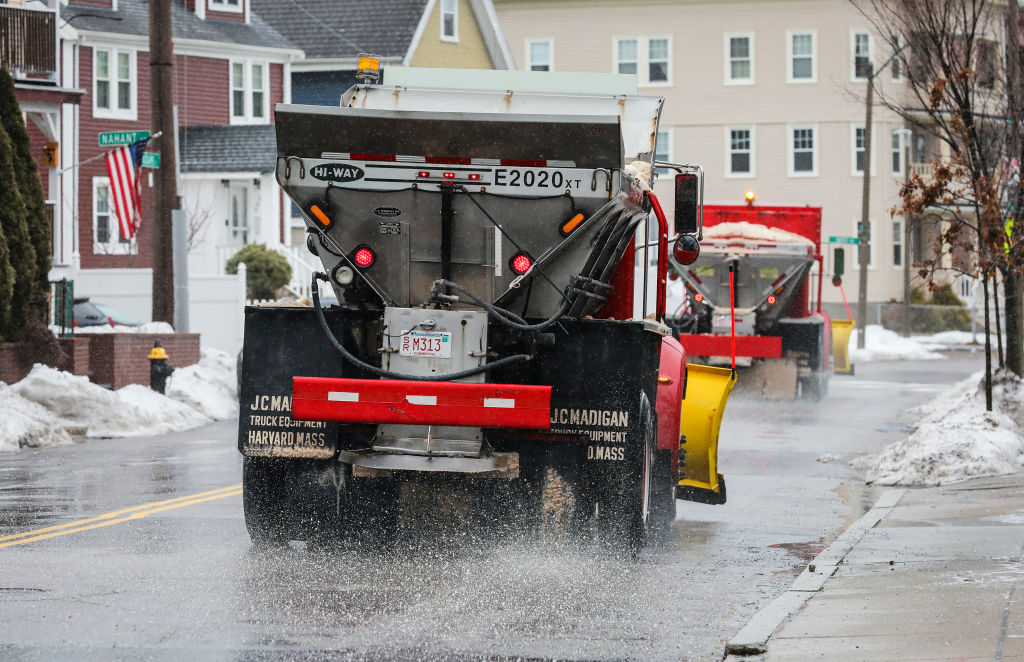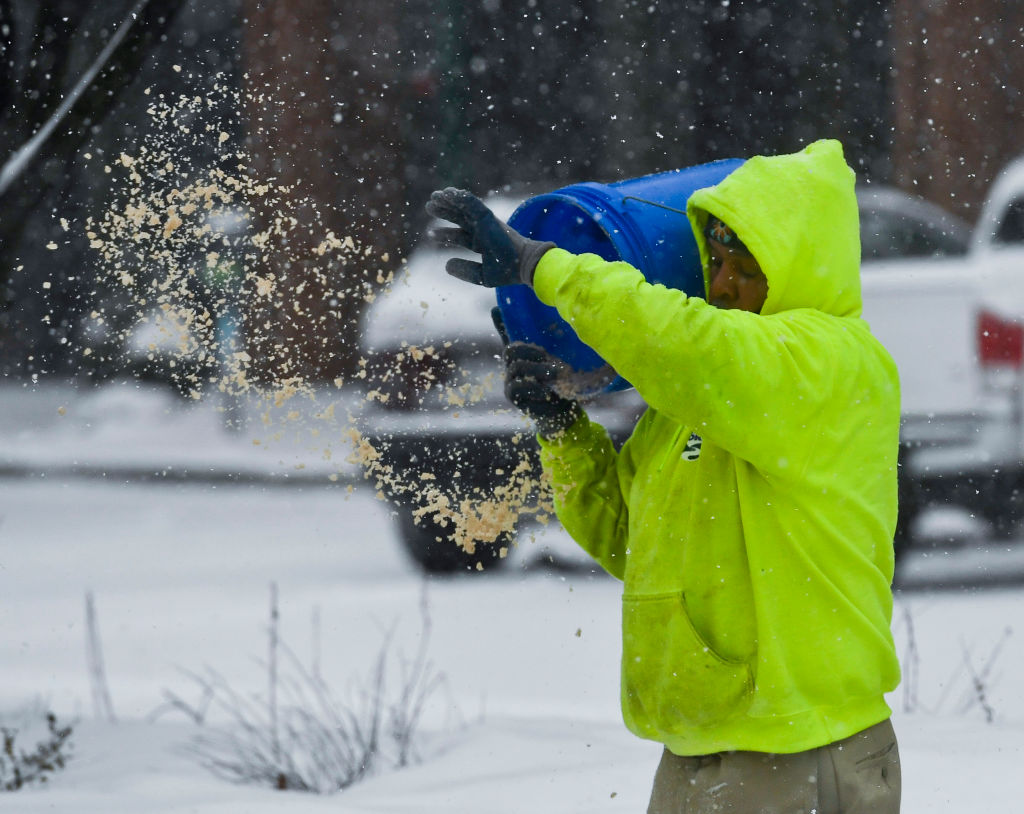
This winter’s first snowstorm will be an adjustment for some residents in Davenport, a city of 100,000 on Iowa’s side of the Mississippi river, which averages nearly 30 inches of snow over the season. Like many towns across the U.S. and Canada, Davenport dumps a hefty amount of rock salt across its roadways each year, melting ice and keeping conditions easy for drivers. But this year, residential streets on the northwestern side of town will be left salt-free.
The trial, which may see residents have to drive a few blocks over snowy roads to reach major arteries, is Davenport’s attempt to “find a balance” between road safety and a growing list of problems associated with road salt, says public works director Nicole Gleason.
Ice-free roads may be good for drivers, but scientists warn that salt is seeping into lakes and rivers, including the Mississippi, killing wildlife and posing health risks to humans. Salt also corrodes asphalt and metal, causing some $5 billion in damage each year to roads and cars. And it lures deer and moose onto highways to lick it up, triggering accidents.
And yet, North Americans are addicted to road salt. Road crews have been pouring the stuff in ever greater quantities since the 1950’s, when cars and highways began to proliferate across the region. According to the U.S. Geological Survey, the amount of salt used on U.S. roads ballooned from 1 million tons in 1954, to 10 million tons in 1985, to around 24 million tons a year by 2019, as drivers demanded increasing levels of safety and convenience. “Fifteen years ago, it wasn’t common practice to expect dry pavement after snow,” Gleason says. “But somehow this idea has taken over that everyone should be driving like it’s summer in the winter.”
The quest for an alternative to salt
As the case against road salt has become firmer over the last decade, scientists and local governments have led a quest to find a less harmful alternative. But success has been limited. Chemical solutions have proven expensive and carry their own environmental risks, like decreasing oxygen levels in water or damaging foliage. Sand works for driveways or small areas where it can be easily swept up, but if used on a larger scale, it can clog drains, contribute to fine particle air pollution, or damage vehicles. Cheese brine has been used to melt snow in Milwaukee, Wis., since 2013—handily using up waste from the local dairy industry. But the available quantities only make a small dent in salt needs. Beet juice has proved effective in many places, but it releases sugar into waterways, fuelling harmful algae blooms which are just as dangerous for wildlife as salt is. As a result, it can only really be used as an additive to salt.
“People always want a silver bullet, but this is a multi-dimensional problem with a lot of pieces,” says Xianming Shi, a leading researcher on alternative deicing methods and professor at Washington State University. “I don’t think we will find a magic solution.”

With dreams of fully replacing salt on hold, many states and cities are focusing on reduction. Public information appeals can help. For example, this winter Sudbury, a city of almost 170,000 in Ontario, is giving out plastic cups in a bid to change residents’ salting habits on driveways. The 12 oz cups, the label notes, hold enough salt to safely de-ice 10 sidewalk squares, or 500 square feet—that’s far less than many people think they need. The cups also remind people not to bother salting when it’s colder than -12°C (10.4°F), because it simply won’t work.
Road crews cut back
Officials are also trying to make it easier for road crews to cut back on salt. Minnesota is a leader here. Since 2016, the state has run a “smart salting” program to train public road crews and private maintenance workers to apply salt without wasting any, helping organizations cut their usage by between 30% and 70% per the state pollution control agency. Minnesota also has policies limiting the deployment of salt on residential streets, like Davenport is trialing. The state’s legislature is now considering a bill that would protect professional salt-appliers and homeowners from legal liability for accidents if they use too little—a factor advocates say has prevented people from using salt sparingly in the past.
The most effective way to cut back on salt may be a more fundamental change in how it’s applied. Spraying brines—roughly one part salt to three parts water—on roads in the hours before snow starts to fall prevents ice from forming in the first place. That proactive approach reduces salt needs by anywhere between 23% and 70%. There are challenges: you need very accurate weather forecasts, and the equipment for mixing and transporting brines is more expensive than for conventional salting. But over the last five years the rising cost of salt and growing awareness of environmental threats has convinced many cities to use brine over salt where possible, including New York, Des Moines and Philadelphia.
For Davenport, which already tries to brine where possible and incorporates 5% beet juice to its deicing solutions to replace some of its salt needs, the next frontier is trying to change public expectations around how clear roads need to be. Judith Lee, the city council member who proposed the trial, says some constituents have expressed anger about the idea of not salting. “They thought we were going to let them slide around on ice, and of course that’s not the case,” she says, noting that road crews will still attend to the trial area if dangerous conditions develop. “But when we talk through all the reasons we want to cut back, people start to understand.”
Shi, the researcher, hopes more local and state governments will find ways to curb their salt addiction. If they can’t, 50 years from now the sodium content of many water sources could reach levels unsafe for human consumption, he warns. “Convenience for this generation—driving from point A to point B fast—could mean our grandkids are drinking salty water.”
More Must-Reads from TIME
- Cybersecurity Experts Are Sounding the Alarm on DOGE
- Meet the 2025 Women of the Year
- The Harsh Truth About Disability Inclusion
- Why Do More Young Adults Have Cancer?
- Colman Domingo Leads With Radical Love
- How to Get Better at Doing Things Alone
- Michelle Zauner Stares Down the Darkness
Write to Ciara Nugent at ciara.nugent@time.com